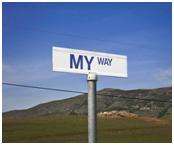Jacobs Media’s Ralph Cipolla takes a backwards look at tactics that you just might not want to use in your customer engagement strategies. Or in other words, “what not to do.”
Below is a recent Seth Godin blog that caught my eye.
 It’s easier to love a brand when the brand loves you back
It’s easier to love a brand when the brand loves you back
by Seth Godin
Worth thinking about the next time you’re annoyed at a customer.
Or when you’re dreaming up a policy designed to punish a few outlier customers while it actually annoys all of them.
Tell me again why the gift certificates you sell have an expiration date?
As always, Seth’s post is short, direct, and thought-provoking. Just the type of seemingly simple why-didn’t-we-think-of-that piece that can lead to something real, in-the-trenches-actionable, and impactful.
The view from the Jacobs Media foxhole: Seth’s simple words also scream something that our director of digital and social strategies, Lori Lewis, espouses to the many stations we work with.
This strikes home for me. When I was the new Program Director or Operations Manager at a radio station, I couldn’t wait to kill the radio-ubiquitous “You can only win once every 30 days” (aka “Prize Pig”) contest rule at every station I ran.
Why? “Prize Pig” often means “Super-Avid-Passionate-P1.”
What are those other insidious “Gift Certificate”/”Fine Print” rules that get in the way of a promising “Brand-Customer” love affair?
Sometimes the point can be made more effectively when presented from the “negative perspective.”
So, the “Top 10 Ways to Increase Customer Loyalty… For Your Competition“
1) Limit Their Fun!
Learn from that ingenious gift certificate scheme – it’s bought and paid for with real money, but *poof!* – its value drops to zero after 90 days. Sorry, but “rules are rules.”
Yeah, let’s punish our most avid listeners / visitors / users / players / fans by implementing a “You can’t play / win / visit / enjoy too often” rule – all in the misplaced interest of “fairness.”
2) Don’t Ask What They Think.
Hey, you’re the pro, with unique insight regarding what the people want and need.
The customers are “laymen.” Steve Jobs didn’t do a focus group every time a new i-Gadget was in the works – brilliance just flowed upward, from his black turtleneck into his brain.
Besides, what if they tell you something that contradicts what you actually think? Or suggests change?
3) OK, Ask (But Be Insincere).
Ask the “standard” all-purpose scripted questions during face-to-face encounters with customers.
Re-purpose that 2004 focus group script.
Conduct online customer polls, but skim the results, looking for that kernel of data that supports what you already think or have planned.
“Canned” email auto-responses and a voice-mail message that says “Your call is very important to us – Please leave a message” are terrific time-savers.
So you read somewhere that the mere “act” of “complaining” on the part of the customer is cathartic.
When a customer calls or emails or posts nasty notes on your Facebook page – the message is delivered, venting is complete – there’s no need to actually respond or engage.
Or get back to the whiner several days later, and show some real attitude.
5) Complainers = Tiny Minority.
If we actually did something “wrong,” a lot more people would be emailing and calling. Besides, this will blow over.
Why think this small number of complaints comes from passionate “power users*” on the leading edge of your customer base? Or someone holding a meter or diary.
(*Those who have blogosphere and face-to-face influence on other customers and prospects, and whose insights could represent early-warning indicators of “iceberg, dead ahead.”)
6) Equate Business Experience With User Experience.
You do this for a living, after all, so just go back to #2.
Sure, you rarely use your product like your customer does (often impossible to do objectively, given how close you are to the situation).
But you talk with “the guys” and family members; if there was a problem, wouldn’t they let you know?
“Coming soon…”
“We’re working on a better way to…”
“We’ve been listening to you, and we’re coming up with ways to…”
“(blah, blah, yada, yada)”
Translation:
“We’re always in [listening to / looking at / thinking about / waiting for / coming soon] mode – too busy with our own agenda to actually ‘do’ what you asked. Like a mirage, what you really want is always just out of reach.”
8) Quality, Schmality.
“Great” is a time-table killer. “Good” is good enough. In the marketplace, it’s all relative. You just need to be “good enough.”
Get it done. Get it out there. Get in the game. Fill the shelves. Fill their in-box. Fix it later.
Oh, but if you don’t have time to fix it now… when will you find time to fix it – and your tarnished image?
9) They Engage. You Try To Change Their Mind.
This is easier, faster, and much more convenient than actually listening to what your customers are trying to say.
If you really listen, you might have to adjust your tactics, roll-out plan, business plan, or your tightly-held sacred belief system.
Convince them to see it your way. They should access your station on the platform that you can provide and monetize – not on the ones that are expensive, inconvenient, or not in the budget. After all it’s cheaper… at least in the short-term.
10) _________________.
This is where you fill in the blank.
Do some real soul-searching. Take inventory of bad habits, outdated beliefs, and short-sighted “rules” and tactics.
Share those “If we could have done it differently…” moments, and what you did about “it.”
What can you (and others) do that embodies the spirit of Seth’s blog, and moves you far, far away from the preceding 10 step plan for failure and mediocrity?
Which of your policies serves to drive your audience away or makes it difficult for them to enjoy your brand? Then end them.
How’s your CX?
- Media And Technology In 2025: Believe It Or Not! - April 18, 2025
- In Radio, You Just Never Know - April 17, 2025
- The Secret To Making A Great Podcast (And Great Radio) - April 16, 2025






Leave a Reply